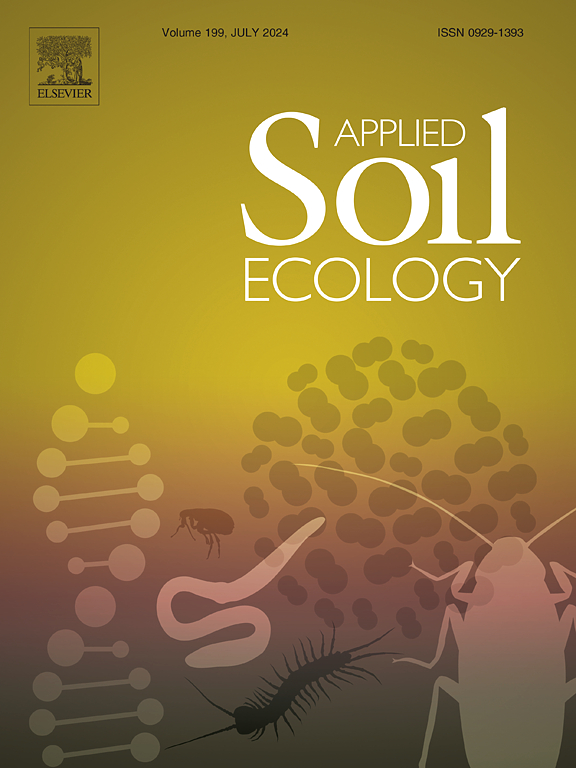Towards distinguishing biotic and abiotic contributions to phenol oxidase activity: Current understanding and future perspective
IF 4.8
2区 农林科学
Q1 SOIL SCIENCE
引用次数: 0
Abstract
Phenol oxidase activity has traditionally been evaluated by measuring the oxidation rates of artificial substrates, such as L-DOPA. However, it is recognized that the oxidation of L-DOPA is influenced not only by enzymatic reactions but also by abiotic oxidation mediated by soil minerals. In this perspective paper, our primary objective is to summarize the current understanding of the biotic and abiotic contributions to phenol oxidase activity. The biotic contribution to phenol oxidase activity appears to be relatively small when autoclaved soils are used as a negative control. However, autoclaving leads to an overestimation of negative control due to the exposure of minerals coated with organic matter. As an alternative approach, we attempted to estimate the minimum extent of biotic contribution to phenol oxidase activity through a 7.5-day short-term incubation. This approach involved measuring the decrease in phenol oxidase activity during incubation, as only biotic enzyme reactions undergo degradation during this period, while changes in the abiotic contribution are expected to be minimal. The results suggested that the biotic contribution accounted for at least 50 % to 83 % of the observed phenol oxidase activities, suggesting that the enzymatic contribution to L-DOPA oxidation is substantial, at least within our study sites. This approach also underestimates the biotic contribution to phenol oxidase activity, as it does not account for undegraded phenol oxidase or phenol oxidase production during incubation. In conclusion, while current approaches provide some insights, they are unable to fully distinguish between biotic and abiotic contributions to L-DOPA oxidation. A new technique is urgently required to effectively differentiate between biotic and abiotic contributions to L-DOPA oxidation.
区分生物和非生物对酚氧化酶活性的影响:当前认识和未来展望
本文章由计算机程序翻译,如有差异,请以英文原文为准。
求助全文
约1分钟内获得全文
求助全文
来源期刊

Applied Soil Ecology
农林科学-土壤科学
CiteScore
9.70
自引率
4.20%
发文量
363
审稿时长
5.3 months
期刊介绍:
Applied Soil Ecology addresses the role of soil organisms and their interactions in relation to: sustainability and productivity, nutrient cycling and other soil processes, the maintenance of soil functions, the impact of human activities on soil ecosystems and bio(techno)logical control of soil-inhabiting pests, diseases and weeds.
 求助内容:
求助内容: 应助结果提醒方式:
应助结果提醒方式:


